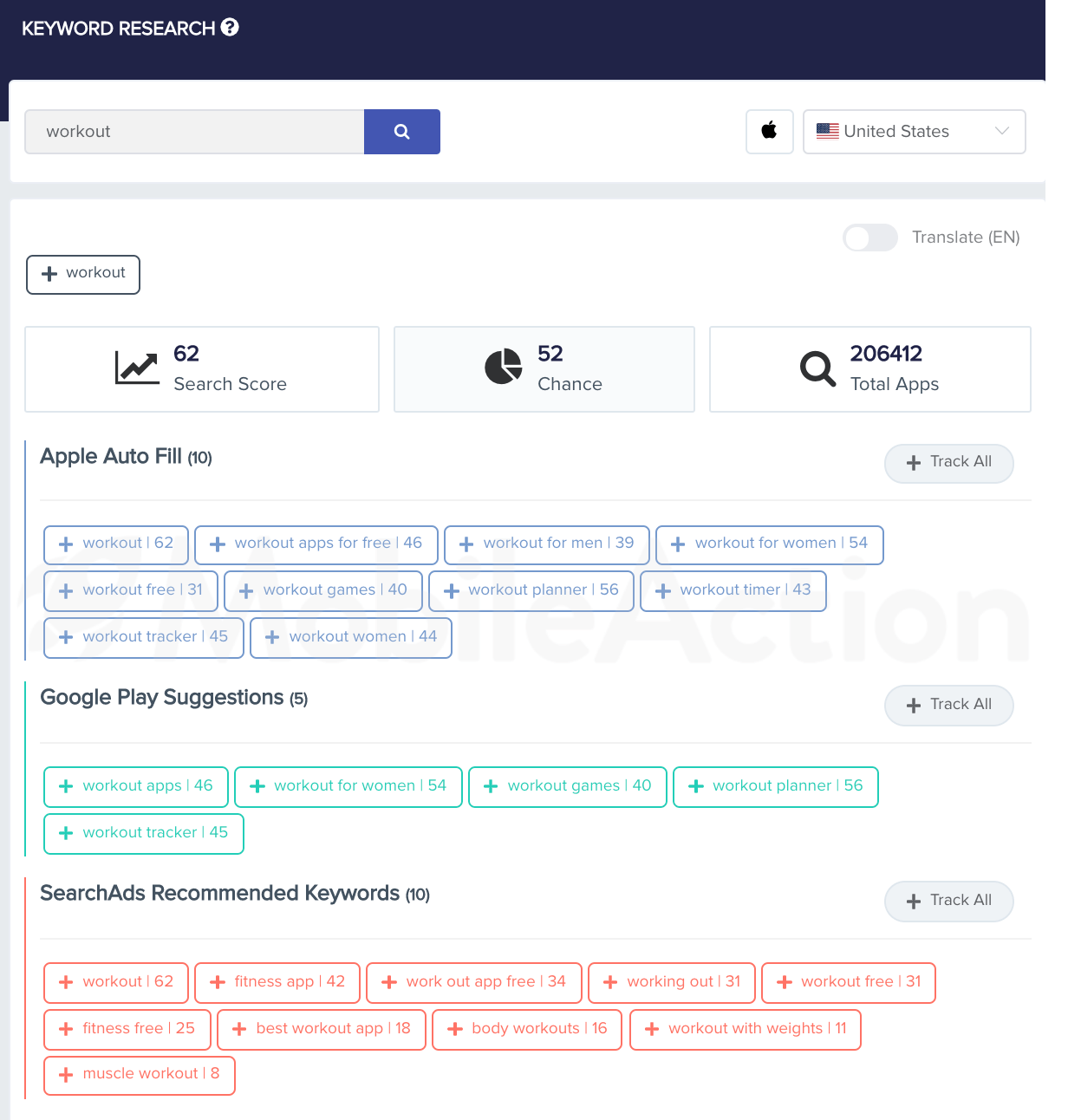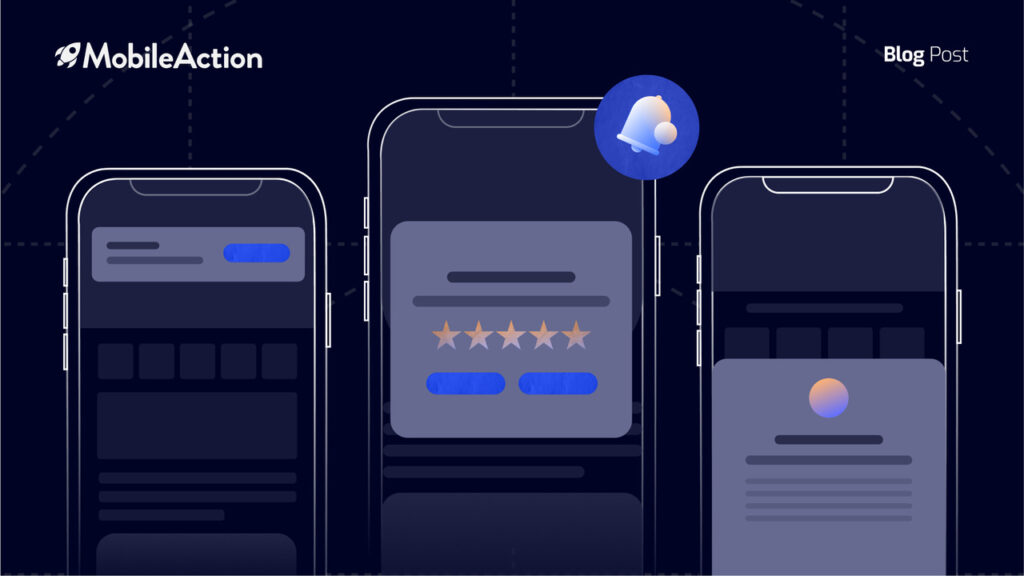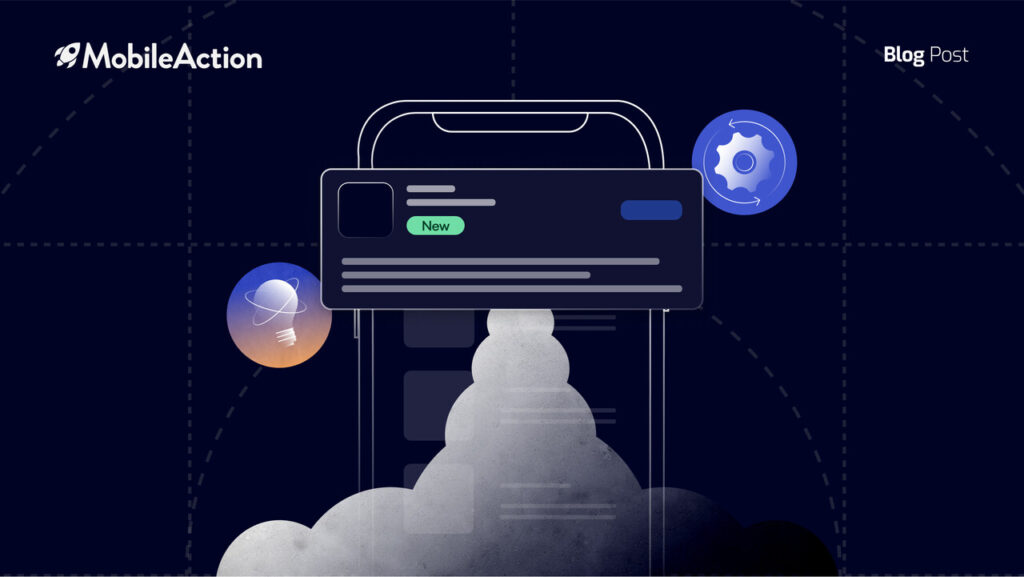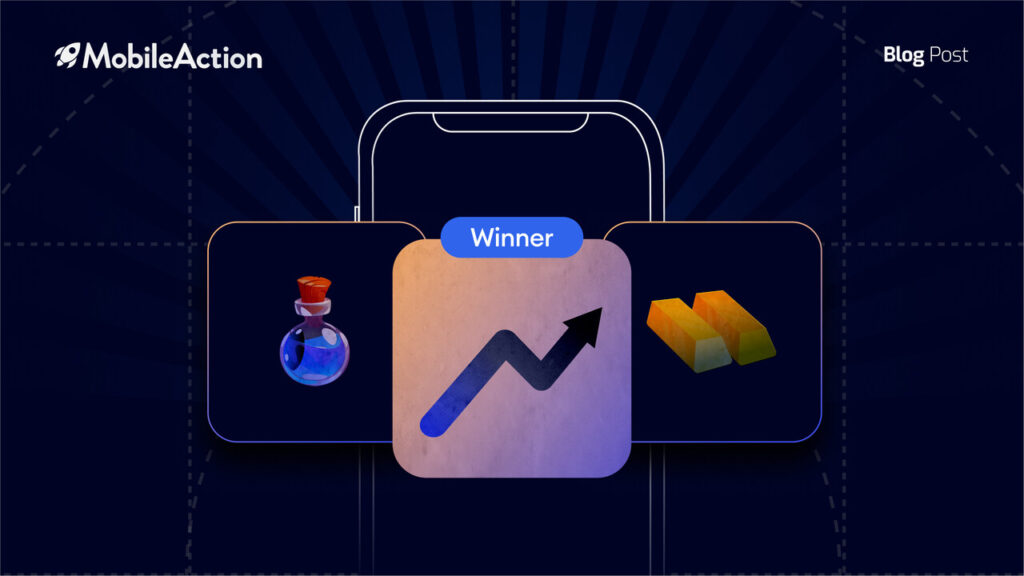Let’s dive right in by asking what is App Store Optimization. App Store Optimization is a two-step process that aims to increase the visibility of your app as well as your Conversion Rates by a set of different practices.
App Store Optimization has a quite wide scope and requires know-how in different areas.
For example, you need to have a bit of creativity and knowledge to succeed in optimizing your conversion rates. You might also need to know a bit about data analysis to be able to better monitor and analyze the outcomes that you get from your App Store Optimization efforts. Of course, having great teammates would also help!
How Does ASO Work?
App Store Optimization is an intricate process. There are various different sets of practices that all contribute to the bigger picture: growing your app.
App Store Optimization aims to grow your app by making it more visible, accessible, and intriguing.
To do so it uses methods such as App Store Keyword Optimization and Conversion Optimization.
While these two sets of practices occupy the core of App Store Optimization, in general, they are drastically different from each other yet, just like most things in the mobile app development industry, they are also intertwined with each other.
For example, your App Title is one of the most important assets to utilize, for both increasing your visibility and conversion rates.
The keywords that are ranking in your App Title have the strongest impact on your ranking. Before diving into your subtitle or description, you should make sure that your App Title is the best it can be. Do not forget that your App Title is also one of the first things that people see about your app.
Even before checking the App Icon, users read the title, so having a clear descriptive title that has your brand name in it while also having your most important keywords for your ranking in it is the best possible state you want to reach. Your screenshots can also make or break the deal depending on how they convert your value propositions.
That’s why App Store Optimization needs a comprehensive approach that covers both aspects.
What Does It Aim to Accomplish?
As stated before, App Store Optimization has two primary ways to reach the ultimate goal of growing your app.
a. Increasing Visibility
So, what exactly is app visibility? Visibility basically represents how easy it is to come across your app in the app stores when a keyword that is relevant to your app is searched for.
Increasing your Visibility boils down to increasing your App Store Keyword Rankings. In other words; increase your ranking on various keywords your app is ranking for to appear at a higher spot in the search results for those keywords.

Surely, targeting the right keywords can be quite a challenging task, so you should use the right tool kit in order to make this process as streamlined as possible.
In MobileAction, there are multiple app store keyword optimization tools available to make this process easier.
One question that we frequently receive is whether to prioritize popular keywords or more relevant keywords with less search volume. In most cases, your ASO strategy should include a combination of these keywords.
While you will receive less conversion from popular keywords, long-tail keywords will allow you to target high-value users which will probably use your app for a long time.
Our Keyword Research Tool can help you discover high-user intent keywords in a second.

By using the right keywords in the right places, you can greatly increase your app’s visibility consistently as long as you keep monitoring and optimizing.
b. Increasing Conversion Rates
Making your app highly visible doesn’t accomplish much on its own if you can’t translate the visits to your app page into downloads. Mobile App user acquisition is one hard task to accomplish, as the competition is rough and people spend thousands of dollars just to get seen. So although visibility is important, it isn’t all there is. That’s where Conversion Optimization kicks in.

By optimizing the creatives of your app (app icon, screenshots, description, video previews, etc.) you can make your app easier on the eyes (trust us, good visuals mean interested customers!), and this way the visitors to your app page will be impressed and intrigued by your app and hopefully download it.
A good app store keyword strategy can produce incredible results if paired with an equally effective product page.
Why App Store Optimization?
You might wonder among all of those ways to promote your app why App Store Optimization?
Why shouldn’t you go for the methods that bring results faster? Why should you invest so much time into a seemingly unending process of trial and error?
Well, if you want to have a successful app business and make revenue instead of constantly sinking the money you earned into ads to get more revenue, you have to do App Store Optimization to get out of a potentially vicious cycle. Additionally, ASO is much cheaper to conduct compared to paid mobile user acquisition strategies.
That is why conducting App Store Optimization is an absolute must for all app publishers no matter their size!
Yet another reason to invest in ASO is the fact that Organic traffic is the best type of traffic an app can get as these users are usually users with high retention rates and they also have a better chance of spending money on your app. So, what’s better than a user base that keeps using your app for extended periods of time while also spending money on it? We can’t think of a better user base than that.
Additionally, having a solid ASO strategy in place will be beneficial for your paid campaigns as well. Do not forget that, the ultimate place prospects will end up is your product page. Thus having good conversion rates will increase the ROI you receive from your campaigns.
One great example is Apple Search Ads. We have discussed several times how your App Store Optimization strategy can help your Apple Search Ads efforts while Apple Search Ads can help your ASO keyword optimization efforts. So ASO will not only help you to increase your visibility, but it will also enhance the outcomes of your other mobile user acquisition efforts.
Key Factors for App Store Optimization
Know the environment. You will be surprised how many wars have been won by only knowing the environment around the battlefield.
Knowing everything about the two fronts you will be fighting will allow you to be much more efficient and you will get much more out of your App Store Optimization efforts.
App Store Optimization is a tricky and long process that involves a lot of trial and error. So, to save as much time as possible it’s quite important to have a look at the most basic points about App Store Optimization.
As the two major app stores are drastically different from each other we will have a look at them individually.
Key Points for the Apple App Store
The Apple App Store is drastically different from its counterpart the Google Play Store in terms of App Store Optimization.
They differ from each other in terms of how they rank apps, how the search results appear and the store is overall much different.
So, let’s have a look at the most basic traits of the Apple App Store.
a. Categories in the App Store
Every day thousands of apps enter the market with already more than 2 million apps in the Apple App Store, having apps split into distinctive categories is quite natural.
The games category was a problematic one as nearly half of the apps in the App Store were belonging to the games category.
What was further problematic than that was the fact that the subcategories under the games category were sometimes larger than other categories.
Apple found the solution to that problem in the 2 dimensional App Store which is split between Games & Apps. You can almost say that there are two different app stores with their own Top Charts and Categories.
Furthermore, when submitting an app to the App Store, you are obliged to choose a category.
Now, this is an important step as once you choose your category you will be competing with apps native to that category. It’s, therefore, very important that you really know which category is the most fitting one for your app.
You will have to choose one, from many main categories.
Keep in mind that your app should be relevant to your category. You can’t just blindly pick a category. Your relevance is determined by an algorithm.
Even though it’s called a secret sauce factor, it actually boils down to the relevance of the keywords in your keyword spot, app title, description, etc. to the category you are choosing.
b. Ranking in the App Store
So far, we have explained how categories work and how you rank for keywords and how you rank in categories.
The million-dollar question is that how does the Apple algorithm decides how to rank you. As there is no public information on how ranking is done we can only guess, right?
Well, not exactly…
There are some points that have been revealed by tried and tested experiments. There are several factors that are definitely affecting your rankings.
In the basic understanding, your keywords and download numbers are your strongest ranking factors.
However, we should explore how keyword rankings work and which assets on your app listing page are factored into your apps’ ranking.
Let’s have a look at the factors that you have direct control over and how do they affect your rankings:
- App Title: The highest impact on your ranking comes from the keywords you have in your App Title. Currently, Apple allows you to use 30 characters in your App Title. It’s, therefore, vital to have your most important keywords in the App Title as you have the chance to rank for the highest for those keywords.
- Subtitle: Introduced with the iOS upgrades, the Subtitle field is a 30 character long field that appears below your App Title and is used to give a bit more information about your app. The keywords used in your Subtitle field are indexed as well, therefore, having an informative subtitle that has some of your focus keywords is again quite important for your apps’ success.
- Keyword Spot: The default place to put your keywords. You have a 100 character limit to this spot and it’s invisible to anyone other than you. So, it has no impact on your conversions or anything else than your ranking. You will be ranking for the keywords you have in this field. Moreover, you will also be ranking for the combinations of the keywords in the field if they are separated by a comma. Let’s say you have the keywords photo, editor, plus in your keyword field (Don’t forget that this is just a mediocre example). You will be ranking for photo editor plus, editor plus, photo editor, photo plus in addition to the individual keywords.
Making sure to have the best performing, tried and tested keywords in this spot is quite important.
The impact the keywords on this field have over your ranking might be less than the two other spots but as you can add more keywords to this field, the App Store keywords spot allows you to cover more ground in the app store even if the weight over your ranking is less.
More interestingly, when you first launch your app into the App Store, Apple gives a 7-day boost to your keyword rankings. That period is precious as it allows you to gather some traffic from those keywords which will, later on, contribute to your ranking as well. So, before launching an app, it’s quite helpful to have your keyword optimized as much as possible.
In addition to the factors you have control over, there are some other factors that also affect your ranking that you don’t have direct control over.
- Downloads: The number of app downloads and the velocity of the download numbers has been historically the prime way of ranking your app. However, it’s reported that in both app stores, the weight it has, has been reduced as there are other factors that are taken into consideration.
- Reviews & Ratings: App Reviews & ratings are a great way to show if an app is doing well. Because, people will be spending their time to leave a review for an app, that signals great user experience and therefore, is used to rank your app.
- Retention Rate: While approaching it in a more generic way than Google, Apple does take into consideration the retention rates of an app. Obviously, apps with high retention rates are more favored as a good retention rate signals a high-quality app.
- Developer Name: While it’s not totally uncontrollable, there isn’t much you can do about it. This is only there to ensure that you are ranking for your dev/company name.
Key Points About the Google Play Store
Google Play is, overall, a bit more complex than the App Store, especially in terms of ranking.
To rank your app, Google Play Store uses a formula close to Search Engine Optimization. Yet, it’s not identical to SEO as it’s much simpler than traditional SEO. Even though they appear similar, SEO and ASO have their differences.
a. Categories in the Play Store
Google has been quite active with the categories in the Play Store. They too have separated apps with games as the same issue was present in the Play Store as well. Games being the most crowded category.
In addition to that, Google has continuously added new categories and has changed the name of several other categories to make them more specific as some categories were a bit too generic. This, not only caused issues about competition but was an overall problem in user experience as well.
For example, both Beauty and Auto & Vehicles were under the Lifestyle category. It can be discussed how relevant these two categories are but the main idea is that categories are there to make it easier to navigate the store and also make it easier for apps to be found.
With more than 30 app categories and many games categories, you have a wider set of choices to find the appropriate category for your app.
b. Ranking in the Play Store
Just as we have limited knowledge about the Apple App Store algorithm, we know even less about how Google Play indexes keywords as there are so many different factors Google Play takes into consideration that isn’t publicly available.
As Google Play Store is a bit harder to understand and less information is available, making the most out of what we already know is extremely important.
So, let’s have a look at the factors that you have direct control over when Google takes into consideration to rank your keywords:
- App Title: As with the Apple App Store, the keywords in your App Title have the strongest impact on your rankings. Unlike Apple, Google has followed a more liberating approach to the App Title by allowing up to 50 characters. This opens up the possibility to have more keywords in your App Title.
- Short Description: This 80 characters long field can be viewed similarly to the Subtitle for providing you a chance to show off the basic features your app has or quickly drawing their attention. The Short Description is actually the first 80 characters of your Long Description. The Short Description is quite important in ranking your keywords. In fact, its importance is only second to that of your App Title. Having a short description that contains some of your focus keywords while also making sure it’s optimized in a way that it can contribute to your conversion rate as well.
- Long Description: Instead of having a separate field dedicated to keywords, Google ranks your app for keywords that you have in your app description. You have a 4000 character limit for your Long Description, making the most out of it is up to you. The Long Description is where doing App Store Optimization resembles SEO in Google Play. To decide the importance of keywords, Google looks at the density of those keywords across your entire description.
This means that the number of times a keyword is repeated in your description in relation to the total number of keywords in the description.

You can use our Keyword Density tool for optimizing your Google Play ASO description.
Simply, having repeated a keyword around 4-5 times is necessary to signal Google that you wish to rank for that keyword.
Don’t forget that stuffing keywords into your description won’t help. Your app will not only get rejected but also even if you manage to get past that, people won’t be inclined to download the app as it won’t make any sense to them.
- Retention Drawn From a Keyword: Unlike Apple, Google has a more detailed approach to retention rates. Rather than looking at the apps’ overall retention rate, Google looks at the retention rate of downloads that came from a keyword. In simpler terms, when calculating your keyword ranking for one of your keywords, Google looks at the retention rate of the users that downloaded the app through that keyword. The performance of that keyword is, therefore, not only calculated based on your download numbers and velocity but also the retention rate of that keyword too.
- Stability: It’s reported that Google also looks at the overall stability of an app when ranking it. If an app has numerous bugs and crashes, Google sees that as an indication of a poor app so ranks it lower.
- Localization: This isn’t confirmed by anyone from Google or Apple but it’s pretty much accepted to be true, localized apps rank better in countries they have been localized. This is because both Google and Apple have increased the emphasis they put on user experience. People, naturally, prefer apps that are in their own language even if they speak English. If you are determined to go global, localization is a huge benefit for you.
Getting Started With App Store Optimization
App Store Optimization is a long process that requires a good amount of hard work.
But the results are amazing.
A well-executed App Store Optimization strategy will bring exponential growth to your app while still also being budget-friendly.
Getting started with App Store Optimization is a great leap forward for your app business.
So, how do you get started with App Store Optimization? Do you just start by finding keywords and trying them?
Not really…
You should first have a look at your own app. It means nothing to analyze the market without knowing where you stand in it.
The first step of App Store Optimization, as a result, should be turning the spotlight to your own app and identifying the strong and weak parts of your app’s marketing strategy.
Without knowing where your app stands in the competition, how are you going to come up with a strategy? That’s why knowing where you stand in your category, which keywords you are ranking for the best, which keywords bring you the most traffic, and how people view your apps is absolutely vital for you to be able to have a proper App Store Optimization strategy.
Feel free to schedule a demo to learn more about our app store optimization tools and how you can grow with MobileAction!






